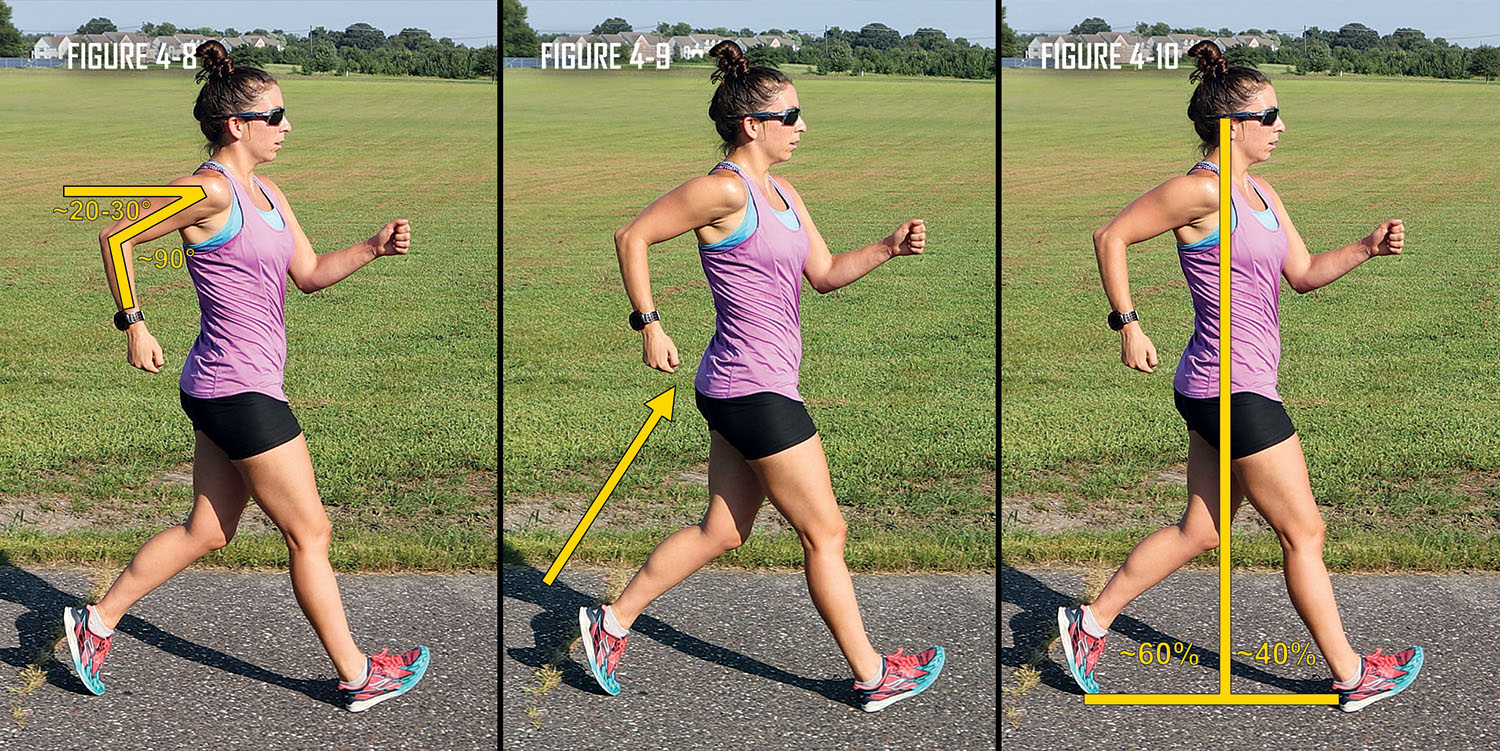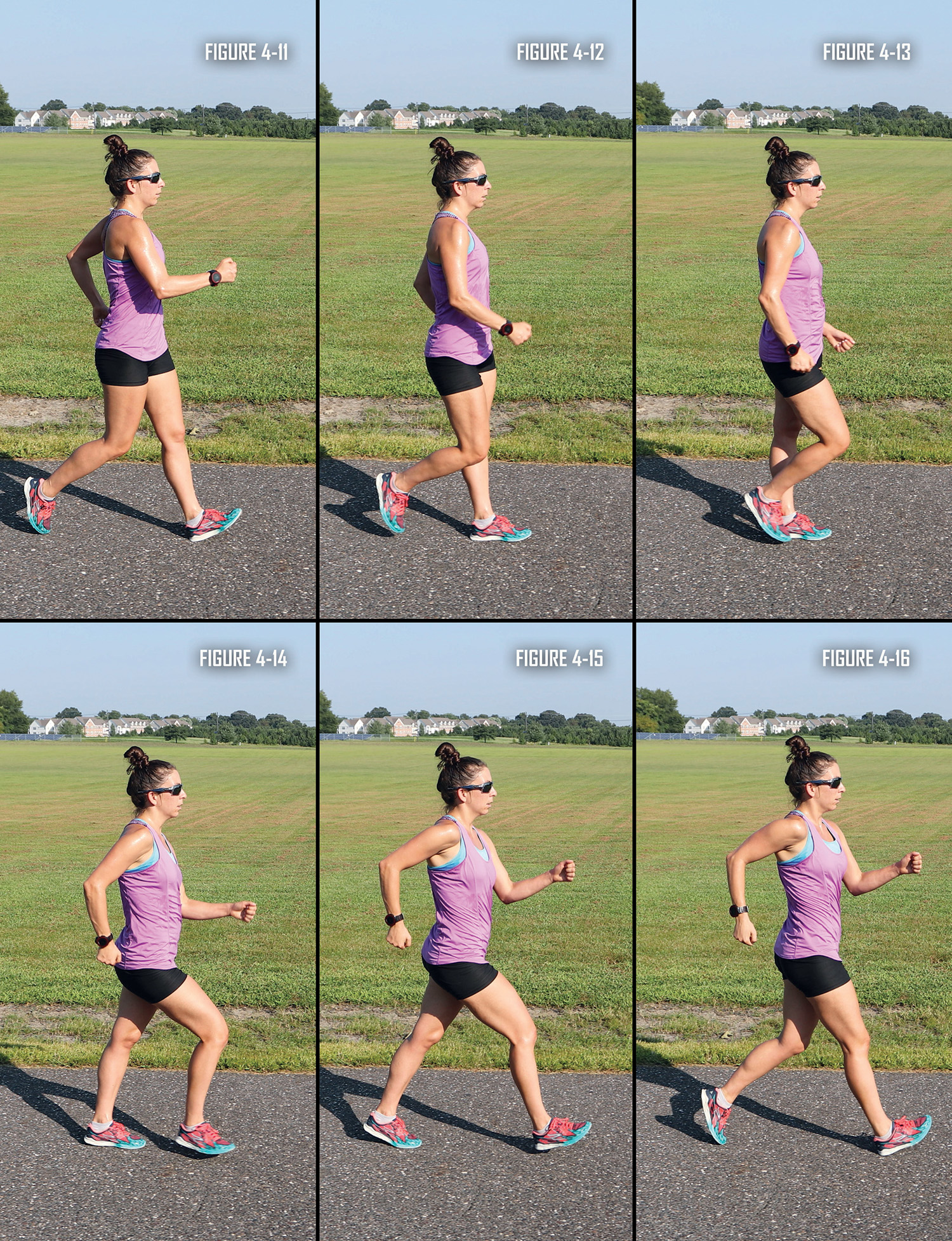Overall Stride continued
Let’s also note the position of the rest of the body. The right arm swings backward coming up to an angle of 20-30 degrees (Figure 4-8). While for decades we’ve stated you should hold your arms at 90 degrees, most elite walkers hold there are angle at slightly less than 90 degree.
The key is for your hand to swing to just behind the hip (Figure 4-9). If you are holding your arm at 85 degrees and it’s not swinging back far enough, try opening your arm angle to 90 or 95 degrees. In contrast, if your hand is not coming far enough back, then open the arm angle until you achieve proper hand position. The variation can be for many reasons including a difference in the ratio between your upper and lower arm.

Finally note the ratio of the stride in front and behind the body. It should be roughly 40/60 (Figure 4-10). Note, when elite walkers gain a flight phase it can be closer to 30/70. The legs do not create a symmetrical triangle. This is achieved through proper hip action, which is explained shortly. How you measure it matters. In this case we are measuring the front of the stride from the point of heel contact to the center of the torso and the rear portion from the center of the torso to the point of toe off.
Having less of your stride in front of the body allows a walker to optimize their stride by having more of the stride in the propulsive phase. In contrast, when the foot is on the ground and too far in front of the body it acts as a brake, slowing the walker’s progress as well as adding stress that can lead to injuries.
Next, we observe the right leg as it swings forward (Figure 4-11 through 4-16). The goal is for the foot to swing forward as low to the ground as possible. This averts loss of contact problems that might occur if you drive your foot too high coming through your stride. If your foot is too high, you might have a propensity to drive the leg up instead of forward, thus making you at risk of visible loss of contact and getting disqualified. Watch the progression as the rear foot leaves the ground until just after the same foot strikes the ground in front of the body.

Then the body moves forward over the right leg. This is where walkers tend to violate the definition of race walking. The leg must remain straightened until it is in the vertical position.
Once the leg is beyond the vertical position, it may bend.
However, when it comes time to lift your heel off the ground, if your leg is still straightened, you get an extra thrust forward by pushing off your rear foot. With proper flexibility and strength your leg stays straightened longer, and you obtain this advantageous thrust. Ideally, the leg remains straightened until the ball of your rear foot is about to lift off the ground.
Then roll up onto the toe of your rear foot. Notice that as the rear (right) foot leaves the ground, the front (left) leg is already in position (Figure 4-7).
Next Lesson: Correct Hip Motion
Quick Link: Race Walking Arm Motion